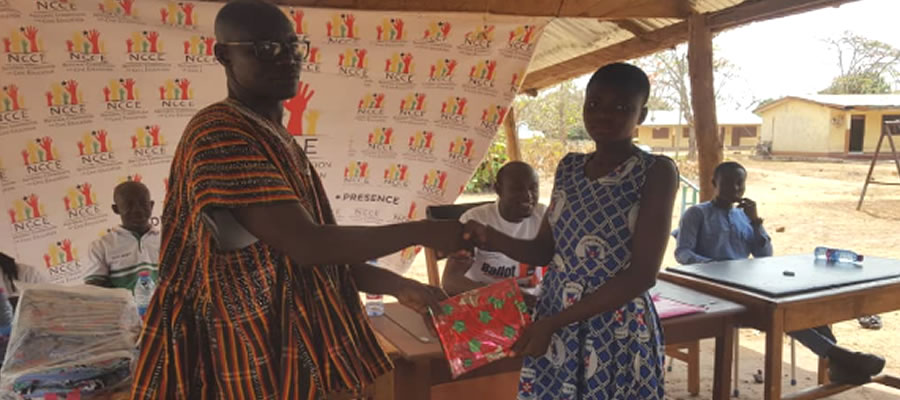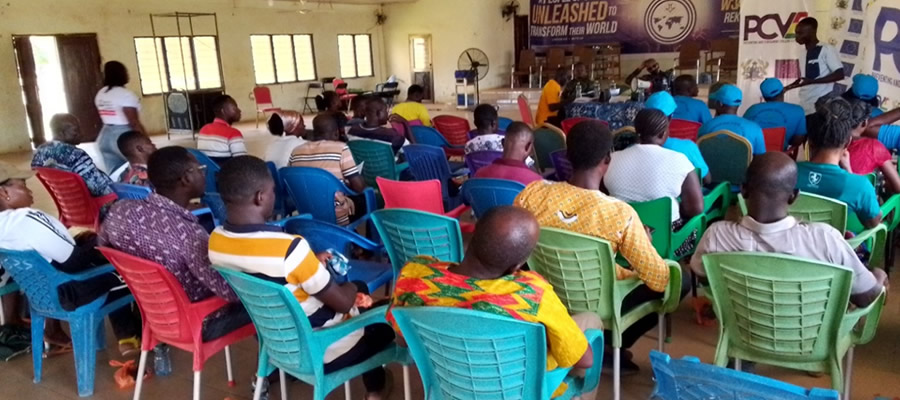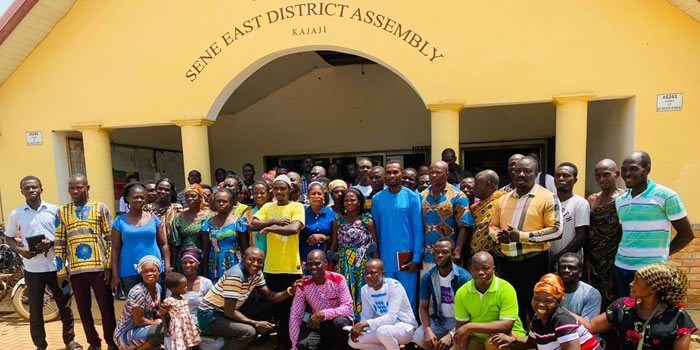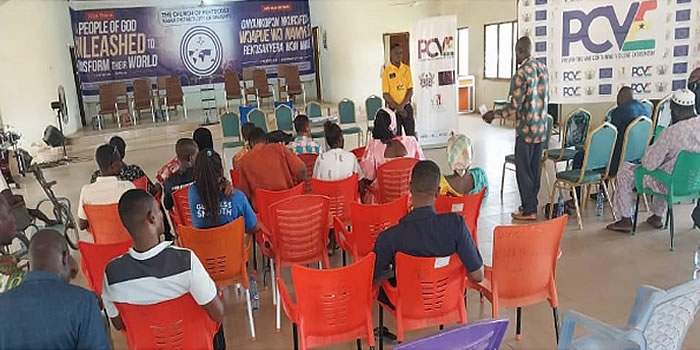

Main Source of Water for Drinking and for other Domestic Use
The availability of and accessibility to improved drinking water is an important feature in the health of households. The source of water supply particularly for drinking has a tremendous effect on the burden of diseases. For instance, one of the main health benefits of clean drinking water supply is a reduction in diarrhea cases. Water sources are often classified as ‘improved’ or ‘unimproved’: Sources considered as improved are piped public water into homes, public standpipe, borehole, protected (lined) dug well, protected spring, and rainwater collection; unimproved are unprotected wells and springs, vendors, and tanker-trucks (WHO and UNICEF, 2000).
Main source of water for drinking
Table 8.11 presents the main source of drinking water of dwelling units. The data in the table show that, according to the WHO definition, about 40.1 percent of the population in the district has access to improved sources of water, made up mainly of bore-hole (31.5%) and pipe-borne water (inside dwelling, 0.2%; outside dwelling, 2.8%; and public tap/standpipe, 4.5%). The rest are protected wells (0.8%), protected spring (0.1%) and rainwater (0.2%). That leaves majority of households in the district with access to unimproved sources of water mainly from rivers/streams (38.4%) and dugout/pond/lake/dam/canal (19.8%). Another 1.4% of households rely on unprotected wells as sources of water for drinking in the district.
Main source of water for domestic purposes
Table 8.12 shows the main source of water for domestic purposes. The major sources of water for domestic purposes for households in the district are river/stream (39.6%), bore-hole/tube well/pump (29.5%) and Dugout/dam (20.2%). A few households use other sources either than those mentioned above for domestic purposes. On the whole the picture does not depart very much from the main sources of water for drinking.
Bathing and Toilet Facilities
Information on bathing and toilet facilities is also considered important for housing as well as for public health policy formulation.
8.8.1 Bathing facility used by households
Table 8.13 presents bathing facilities used by households in the district. The table shows that the major bathing facilities in the district are own bathroom for exclusive use utilized by 31.1 percent of households, open space around house (17.6%) and shared separate bathroom in the same house (17.2%). The table further reveals that, other bathing facilities are also used by the residents of the district among which are, private open cubicle, shared open cubicle and bathroom in another house. Like cooking spaces, bathing facilities also reflect the status of settlements in which they are found. As explained earlier, as increases in size, young married couples who want some kind of privacy take up plots at the fringes of the village to try to establish themselves. They first put up what they call kitchens on the plot where they spend the best part of the day. They only go to the main family house to sleep when the day’s chores are over but not until they have had a bath. Any temporary structure such as an open space around the kitchen house or an open cubicle outside could serve the purpose of a bathing facility.
Toilet facility used by household
Table 8.14 shows the type of toilet facility used by households in the district. The data show that, more than half (52.6%) of the total households in the district have no toilet facilities and use the bush and open fields. This shows how residents of the district are patronizing open defecation which is very dangerous to human health. Other toilet facilities used by household in the district are public toilets (29.6%), pit latrine (14.5%) and KVIP (2.5%). The dominant toilet facilities are a reflection of the largely rural nature of the district.
Method of Waste Disposal
The methods of solid waste disposal in the district are presented in Table 8.15.Nearly half of the households in the district (42.8%) dispose of their solid waste indiscriminately and almost all the remaining half (46.6%) use the public dump to dispose of their solid waste (39.7% into public containers and 6.9% into open spaces). There are also some households that either burn their solid waste (3.1%) or burry them (2.2%). The danger of these two methods of solid waste disposal is that of late solid waste generated by many households, even in the rural areas, includes many non-biodegradable materials and others with toxic chemicals. When these are buried in the ground they destroy the soil texture or release toxic chemicals into the soil. Similarly when burned, they may release dangerous chemicals into the atmosphere.
Liquid waste disposal
The methods of liquid waste disposal are presented in Table 8.16. The table presents a picture of a general lack of the proper way of disposing of liquid waste in the district. Again that is reflection of the generally underdeveloped nature of the newly-created district. Nearly all the households in the district (95.7%) throw their liquid waste onto the compound (77.7%) or into the street or outside. Only 2.6 percent of the households in the district dispose of their liquid waste into gutters and less than 2.0 percent (1.7%) of households in the district dispose of their liquid waste through a sewerage system, through drainage system into gutter and through drainage into a pit (soak away).
The high proportion of persons disposing of liquid waste on compounds and streets should be a matter of grave concern. It could create unsanitary conditions in most of the settlements in the district where the liquid waste could become stagnant and become potential sites for breeding disease-causing insects. Since the district is a newly created one and settlements in the district are rural communities which do not have well-constructed and adequate gutters, the District Assembly needs to draw up an integrated and comprehensive medium term District Environmental and Sanitation Plan (DESSAP) to facilitate good sanitation and hygiene behaviors among residents in the district.
Date Created : 11/20/2017 2:42:10 AM











 facebook
facebook
 twitter
twitter
 Youtube
Youtube
 +233 593 831 280
+233 593 831 280 0800 430 430
0800 430 430 GPS: GE-231-4383
GPS: GE-231-4383 info@ghanadistricts.com
info@ghanadistricts.com Box GP1044, Accra, Ghana
Box GP1044, Accra, Ghana